Rooted in Our Stories!
Posted by Sherein Bansal on July 08, 2016Nature’s shining green umbrellas, those green canopies with sprinkles of fragrant flowers and fruits, TREES are such magnificent things. Though rooted to the spot, just one of them can liven up an entire desolate road. Swing from them, play and sleep under them or just sit and study them, trees will always make time and space for you. Nature seems to be giving trees special attention these days...so we should too, right? Here are a few that we picked from our flowering array of stories available in varied languages.
A Walk Among Trees written and illustrated by Nimret Handa
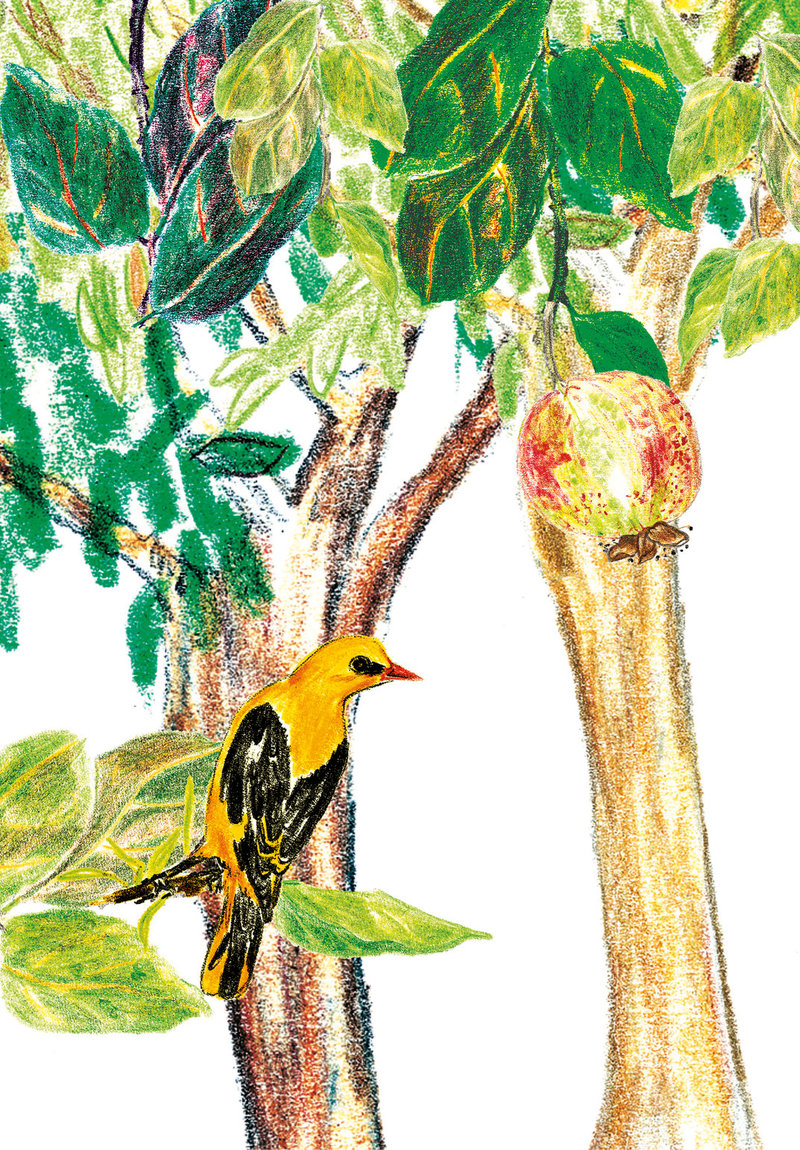
The king’s head gardener is panicked and scolding all his helpers! What could this royal head gardener have to worry about? Take a fun stroll through the King’s gardens and his beloved trees and find out who the king of fruits is... and why. We bet all these tree illustrations will make you fruit-hungry immediately! This story has been translated in Hindi, Kannada and Telegu.
Up World, Down World by Padmaparna Ghosh, Illustrated by Sunaina Coelho
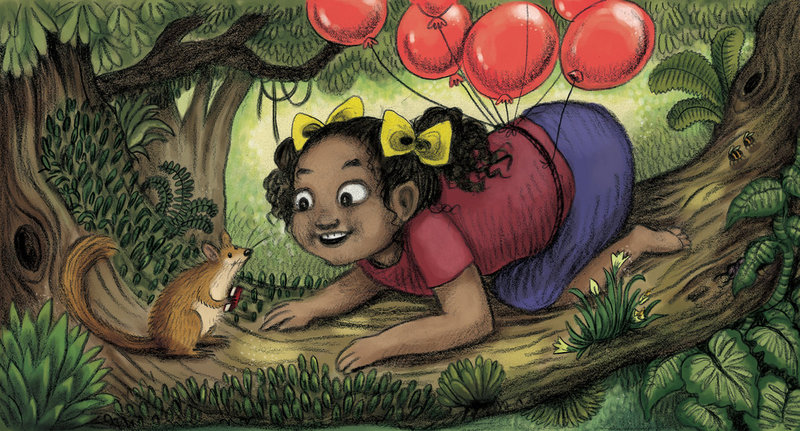
We often have these invisible boundaries around us in which we like to keep our worlds all sewn up and intact. Imagine what can happen if we pull some threads loose and allow Our World to spill out into the one we have been told not to venture into, and let some of the Other World seep into our lives? Be brave! And read this remarkable and beautifully-illustrated story of how a little girl, Fatima, found an unlikely friend in Gopa, a dormouse! Wonderful things happen when two worlds meet. This gem is translated in 9 languages including Hindi and Bengali.
Let’s Go Seed Collecting! by Neha Sumitran, Illustrated by Archana Sreenivasan
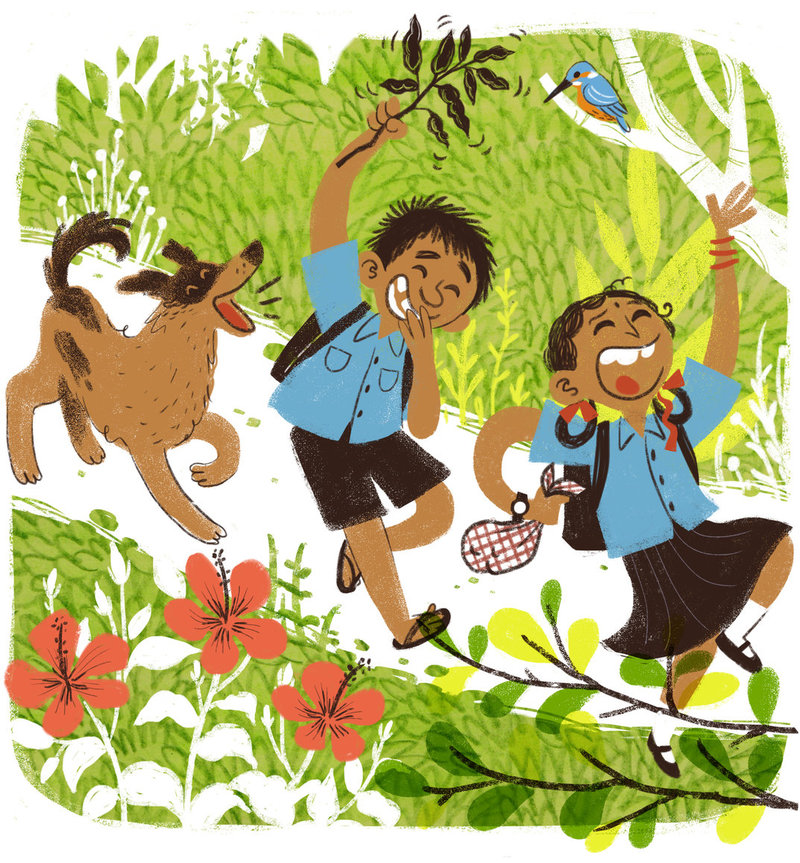
Don’t you just love it when knowledge makes its way to you effortlessly? A great story with fascinating illustrations, this will help kids observe and learn from the tiniest detail of everyday landscapes, appreciate nature in its full glory, learn to be curious, and to seize the opportunity to spend time with a talking tree! Konkani and Marathi are two of the 10 languages in which this story is available in. Enjoy!
Jadav and the Tree-Place written and illustrated by Vinayak Varma
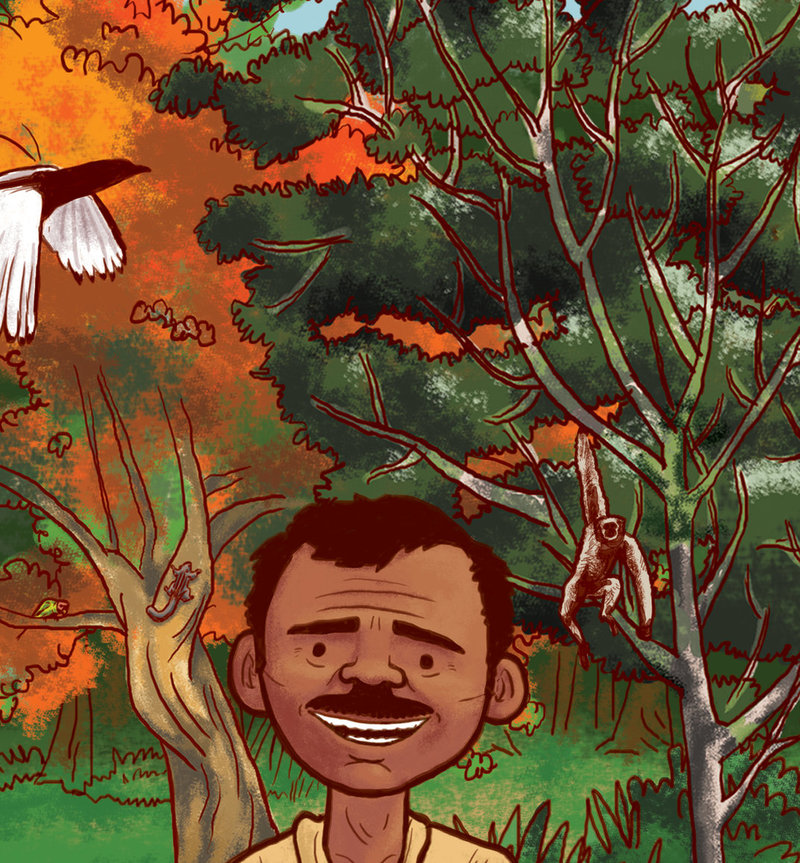
Ever heard of Jadav "Molai" Payeng? He has been planting trees for three decades now. This heart-warming story is dedicated to the undying spirit of a man who was so moved by the plight of snakes dying from heat that he decided to plant some bamboos to give them some shade. What this simple idea grew into... is incredible and an inspiration. Here’s another role model for your kids. We have this story in 11 languages including Odia and Tamil.
We love to see readers like you pitching in! Here’s a pick of three Community Stories where trees branch out in some form or the other:
Deepa’s Resolution by Usha Ayyar
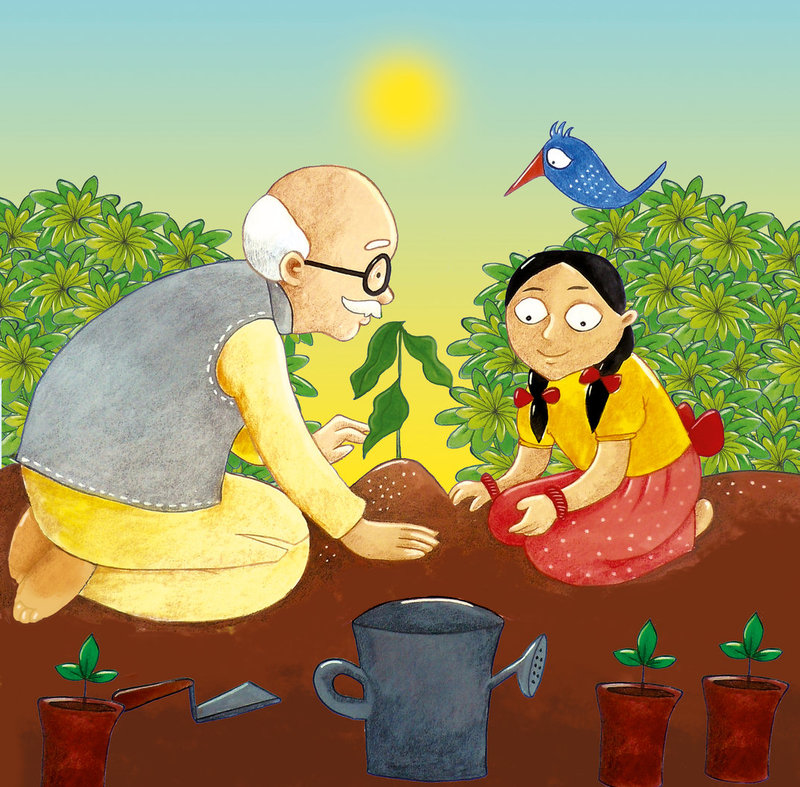
“The true meaning of life is to plant trees, under whose shade you do not expect to sit.” Nelson Henderson’s words are even more relevant now! Read this simple story to your kids and see what they take from it.
Asha Gives up a Bad Habit by Geetha Ravi
Here’s an innovative way to make your child quit that bad, bad habit that you’ve been trying so, so hard to get rid of. Asha learnt two things in this story – How to give up a bad habit (Let’s face it, we all can use some help on that front), and to appreciate the impact trees have on us every minute. This story’s clearly a two-pronged winner.
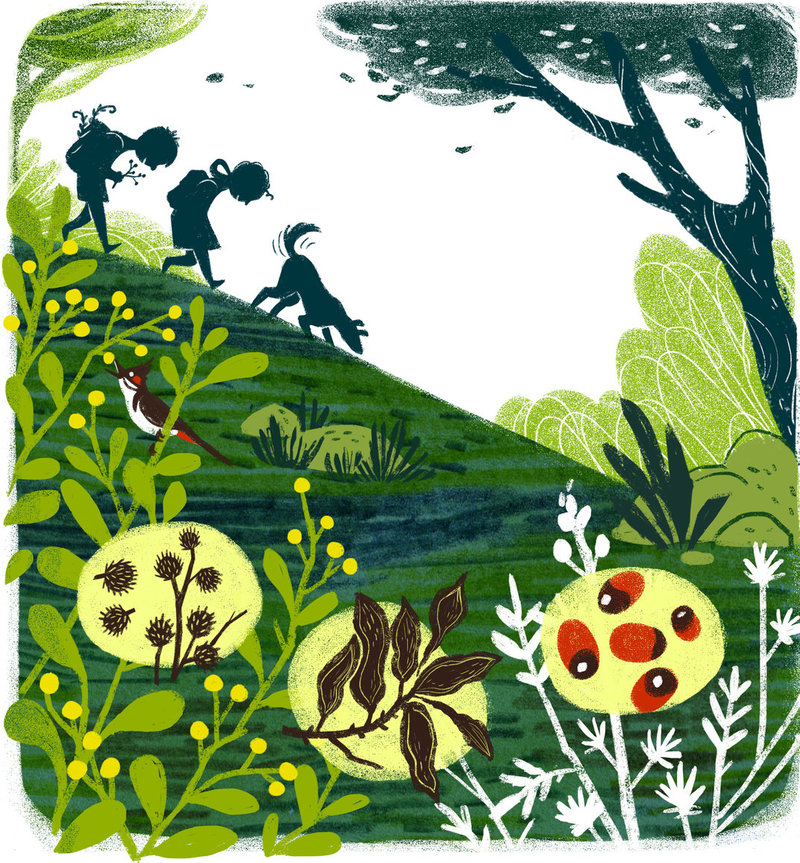
This will remind you of all the innocent times as a kid when you thought that if you sow a seed, its plant would start growing tall the very next day! Nayana and Zia love mangoes, so they decide to plant a mango tree. What they didn’t take into account was all the friendly elements that will come together to help out the little seed. A Malayalam translation of this story is available here!
Do you have a favourite tree story? Tell us what it is in the comments section below, on Twitter or Facebook!
Be the first to comment.StoryWeaver Spotlight: Meet Sushrut Kulkarni
Posted by Amna Singh on July 05, 2016 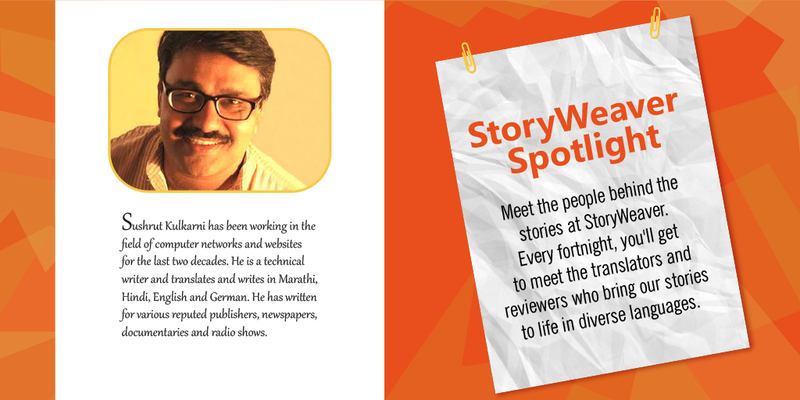
Q: What do you usually read? Which language do you prefer to read in?
A: I usually read in English and Marathi. I prefer to read English non-fiction.
Q: Do you have a favourite book / author and why is it a favourite?
A: My favourite book is 'Man’s Search for Meaning’ by Viktor Frankel. And why? Well, the name is self explanatory ☺
Q: You have contributed for us immensely. How has the StoryWeaver journey been?
A: StoryWeaver was an exciting experience for me. Being from the software field, writing for CMS based business websites was a routine thing for me. But translating & reviewing fiction for a digital platform and seeing it ‘going live’ in a moment was very exciting.
Q: What is one big take away from this experience?
A: My take away from this experience is that digital platforms are quite flexible (and quite forgiving, unlike print media). I learnt a lot about localizing the content while translating content from Indian cultures, other than my own. Once, I found nouns in one language were taboo words in another!
Q: How does it feel when your story gets published online?
A: Initially it feels different than print for sure. There is no wafting ‘fragrance’ of paper and ink, like in paper books. It took me a while to get used to the book ‘getting published’ at a click of a button on the digital platform.
Q: You have translated / reviewed a handful of stories for us. Which one has been your favourite and why?
A: My favourite is How Do Aeroplanes Fly? / विमानं उडतात तरी कशी? This book is not just about the science behind flying the aeroplanes, but also underlines the fact that women can do everything, and gender is not a hurdle if one wants to break the social barriers.
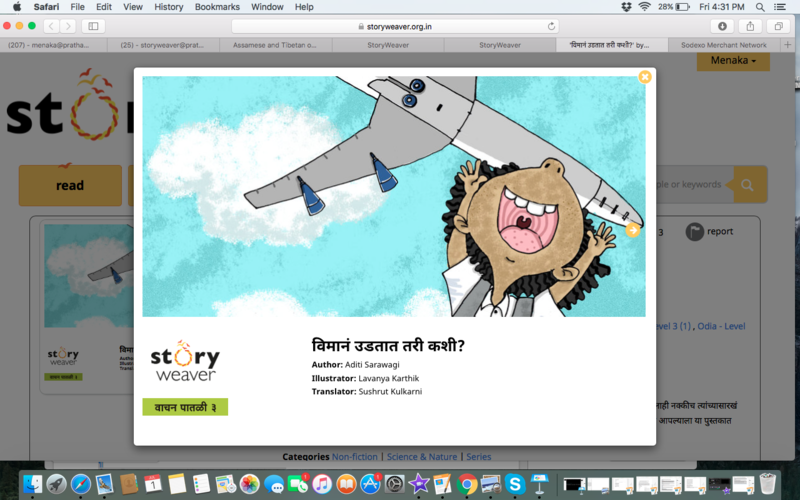
Q: What is your key driver in taking this up?
A: Like most Indian languages, Marathi too lacks quality content for young readers, especially in STEM topics. So I felt the need to do my bit.
Q: How else do you think we can join hands in taking bigger steps for children’s literature?
A: We can translate German books in Marathi and other Indian languages, and that too in our cultural context. I would love to help on that front. Also, I would love to help in conducting workshops for budding translators and teachers aiding the translations of StoryWeaver content.
Q: How has the overall experience with SW been?
A: The StoryWeaver experience was very rewarding. I got immense satisfaction while translating world-class books in my own language.
स्टोरीविव्हरवर वेगवेगळ्या कथा व पुस्तके अनुवादित करणं हा एक अनोखा अनुभव होता. जागतिक दर्जाची, सुंदर सुंदर चित्रं असलेली पुस्तकं स्वत:च्या मातृभाषेत आणतानाचा आनंद काही औरच!
comments (2)
Wider Net: Providing access to educational resources
Posted by Remya Padmadas on July 05, 2016The WiderNet Project is a non-profit organization affiliated with the University of North Carolina, Chapel Hill that promotes low-cost information and communication for underserved populations.
The eGranary Digital Library, also known as "The Internet in a Box", is an off-line information repository that delivers over 32 million educational resources to people living in underserved areas of the world. The eGranary Digital Library delivers digital information directly to Web servers inside subscriber institutions, bypassing bandwidth problems. Many subscriber institutions have no internet access or an internet connection experience that is slow, unreliable and very expensive. With the eGranary Digital Library, thousands of people can access the information over their local area networks quickly and at no cost.
The eGranary is already installed at over 1,200 universities, schools, health care centers, and libraries worldwide. They have a huge presence in Africa and India, and in India, they work with a number of organizations, including Samarthanam Trust for the Disabled, Karnataka, Tibetan Children's Village, Himachal Pradesh, AKSHAYA Rehabilitation Trust, Tamil Nadu, Association for Rural Development and Action Research, Vizianagaram and Andhra Pradesh, Blind Peoples Association, Gujarat, India.
Laura Ashcraft, a Digital Librarian at The Wider Net Project, generously took the time to answer some questions for us about the project.
Q: How do you find potential content providers?
Usually what I do is add and organize content for a set of domains (think special libraries) that I manage. I am either actively looking through the Internet or databases, or I stumble across a viable candidate whilst looking for something else. The key is keeping the projects organized. Much of what we seek is inspired by requests we get from subscribers and users.
Q: Do you have any criteria by which you screen content that is shared on the eDigitalGranary? Who does this screening?
Of course, it goes without saying: no pornography, nothing demeaning or incendiary. On top of this:
· Educational (content must add to a user’s knowledge and/or skill level)
· Domain specific (creating a special library, what we call portals)
· Reliable (the source is vetted as either being produced by a professional or the content is well researched)
· Trustworthy (the content is produced by organizations or individuals who stand by their work.)
For example, StoryWeaver presents not only a wide variety of children’s stories, but the stories themselves do not intentionally portray any culture in a negative light. And of course, I always ask myself does this content serve our community in the most beneficial way?
The content is screened by the librarians here at the WiderNet. If we have a question (content too provocative, is there a broader bias which makes us uneasy, might there be another site that has similar content, etc.?), we consult with our librarian colleagues at UNC or professionals in the respective fields.
Q: Do you customise content on the digital eGranary based on the organisation (school, college etc.) or based on geographical location?
We customize content as per organization request. Not by limiting or subtraction, but by highlighting information that meets a particular group’s needs. This usually means we create a portal and organize existing content within the eGranary around those specific categories. We also actively acquire new content from site providers. Sometimes our volunteer librarians express an interest in a subject we have not explored and they build a portal based on this interest.
Q: Do you have a system by which you can track the number of reads/downloads etc of content on a digital granary? Do you ever look at or analyse this data?
Occasionally we get Apache server logs from our subscribers. We then learn about “hits” (how many times a page is visited or a document downloaded.) Given that most of our subscribers don’t have an Internet connection, this can get awkward.
Q: How often is content on a digital eGranary box updated to keep it relevant?
About twice a year we update the collection that goes out the door. Some organizations purchase an updated drive every couple years, others run the drive until they die. (The medical school in Liberia had theirs up for nine years!) However, subscribers can update the collection by adding their own content on-the-fly.
WiderNet’s latest project is the Pocket Library project. These are chip-sized libraries for specific populations. An Ebola Pocket Library the organisation created in 2015 made them realized the potential application of the "library on a chip" concept.
Q: The Pocket Library sounds like an amazing idea. Could you share details about its progress?
The last pocket library we built was called Girls Can Code – Ethiopia. With the help of our colleagues in Durham NC and Ethiopia we developed a curriculum to teach 40 high school teenage girls about ICT, from building a physical computer, understanding Windows and software application, creating their websites, and finally programming. The librarians’ job was to help develop the curriculum, acquire the resources both in the eGranary and without, and build a website for the project. We had technical staff work on the scraping and troubleshooting and all the other myriad things that must be done to get the content to work as it does on the live internet. This is no small job, but it is incredibly satisfying to know that these USBs are going to be used and kept as a resource for continued education and growth. You can read about that here and here.
WiderNet is in the process of ‘scraping’ the StoryWeaver site to include on their eGranaries. ‘Scraping’ is the process of essentially copying a site. The trick is to get all the functions to work offline as they do online.
Watch this space for updates about StoryWeaver on eGranaries. You can follow Wider Net on Twitter @WiderNetProject
Be the first to comment.